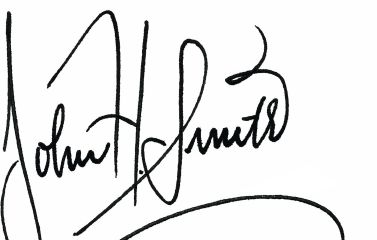
First Ghanaian signature on the Cedi
Late in December 2018, I positioned myself in front of the Bank of Ghana (BoG), Accra and did a survey.
Advertisement
I won’t bore you with details. None of the “street” respondents knew the answer; of the BoG staff, only one got it right.
Not that I expected this to be common knowledge; after all, of all the “street” people I surveyed, only two knew the name of which Ghanaian had his/her signature on the current Ghana cedi.
First
One of the very first 100 Ghanaians to know whose signature was on the first cedi was Mrs Akosua Frema Osei Opare, the Chief of Staff at the Presidency. She was only nine years old in 1958 when Ghana printed its first indigenous currency.
She knew it because the signature on the currency note was that of her biological father, Chas Edward Osei.
No, he was not the Governor of the BoG; in
Hear what Frank Apeagyei, Esquire, the advertising guru said of him at a special public lecture in Kumasi in December last year. As
“C. E. Osei … in 1958, entered into Ghana’s records of history..., divinely chosen, as a creature of uniqueness.
“This uniqueness was exemplified by the fact that when the CPP government of Dr Kwame Nkrumah took the momentous decision to imprint the name and signature of a meritorious Ghanaian on Ghana’s new currency notes, which had replaced the British pound sterling, the honour found him.”
From Apeagyei’s lecture, we learn that C.E. Osei was indeed a “creature of uniqueness”. Said to be divinely gifted with oratorical talent, he honed the gift into a skill with a voracious appetite for reading and he read on all subjects until he became a self-tutored scholar.
His peers recognised this unique gift and at age 29, selected him to lead the team from the Asante Kotoko Society tasked with policing the trial of three Asante men charged by the British colonial administration with sacrilege. The policing was to ensure that the colonial
In 1961 when Queen Elizabeth visited Ghana, CE was the one selected to interpret the Queen’s speeches.
An industrialist, farmer, entrepreneur and philanthropist, no-one was surprised that he entered politics and in 1952, was elected Member of Parliament after years of representing the Ashanti Confederacy on the Legislative Assembly of the Gold Coast, with the British Governor as its president.
Heroes
Dear reader, if this write-up sounds like
After reading Frank Apeagyei’s lecture, it struck me as worrying that Ghanaians do not know our heroes; and this man, C.E. Osei certainly qualifies to be thus described.
Where are our history books — and I am not talking about university level history? Do our basic school pupils and second cycle students have anything close to the ‘Makers of Civilisation’ which were school
Those were history books authored by British historians and Africans who stood in awe of the majesty and
Even in history books written in Ghanaian language such as ‘Fie Na Skuul’, in Akan, the heroes are Sir Henry Morton Stanley, the explorer and Marco Polo, the
Any wonder?
No wonder, therefore, that no (or few) Ghanaian students have heard of Wilhelm Anton Amu, the Ghanaian who dazzled German academics in Philosophy to the extent that in 1965, the University of Halle-Wittenberg raised a statue in his memory; or of Dr Raphael Armattoe, a Ghanaian reputed to be one of the few world scientists who knew the secret formula of the Atomic bomb and was, in 1949, at the age of 35, a runner-up for the Nobel Prize in Physiology.
How many Ghanaian students know that in the Yaa Asantewaa war, the famous Queen of Ejisu and her troops laid siege on the Kumasi
That is why CE’s story captivates me and is worth telling.



